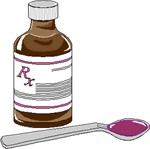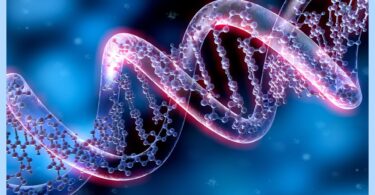Listen To The Audio Lecture for Aphorism Six (MP3/4.10mb)
The sixth aphorism states:
The unprejudiced observer – well aware of the futility of transcendental speculations which can receive no confirmation from experience – be his powers of penetration ever so great, takes note of nothing in every individual disease, except the changes in the health of the body and of the mind (morbid phenomena, accidents, symptoms) which can be perceived externally by means of the senses; that is to say, he notices only the deviations from the former healthy state of the now diseased individual, which are felt by the patient himself, remarked by those around him and observed by the physician. All these perceptible signs represent the disease in its whole extent, that is, together they form the true and only conceivable portrait of the disease.1
Footnote 1: I know not, therefore, how it was possible for physicians at the sick-bed to allow themselves to suppose that, without most carefully attending to the symptoms and being guided by them in the treatment, they ought to seek and could discover, only in the hidden and unknown interior, what there was to be cured in the disease, arrogantly and ludicrously pretending that they could, without paying much attention to the symptoms, discover the alteration that had occurred in the invisible interior, and set it to rights with (unknown!) medicines, and that such a procedure as this could alone be called radical and rational treatment.
Is not, then, that which is cognizable by the senses in diseases through the phenomena it displays, the disease itself in the eyes of the physician, since he never can see the spiritual being that produces the disease, the vital force? nor is it necessary that he should see it, but only that he should ascertain its morbid actions, in order that he may thereby be enabled to cure the disease. What else will the old school search for in the hidden interior of the organism, as a prima causa morbi, whilst they reject as an object of cure and contemptuously despise the sensible and manifest representation of the disease, the symptoms, that so plainly address themselves to us? What else do they wish to cure in disease but these?
To understand the reason behind this and the following few aphorisms, you need to have some understanding of the general medical practice in the 17th and 18th centuries. Therapy in the seventeenth century was mainly a continuation of the past in terms of bleeding, purging, dietary restriction, exercise, and the use of nonspecific plant, mineral, and animal drugs. In spite of the startling developments in chemistry, there were few therapeutic advances in the eighteenth century. The ancient practices of cupping, bleeding, and purging persisted as the mainstays of the practitioner, while syphilis and other venereal diseases continued to be treated with massive, often fatal, doses of mercury. Theriac (a medical concoction made of opium, flesh of viper and a large number of other ingredients), the cure-all of antiquity, was still in use, as was a famous cinchona bark concoction against fevers of all types originated by John Huxham.
There were a variety of medical theories which were prevalent at that time. One of the most prevalent theories was ‘The Theory of Humours’ given by Hippocrates nearly 2000 years ago. Most doctors still thought that there were four fluids or ‘humours’ in the body, blood, phlegm, yellow bile and black bile. Every effort would be dedicated to striking the proper balance between the all-important humors—hot and dry, cold and moist—that kept the body well, or, when out of balance, made it ill. Another theory of disease said that most diseases arise due to excess of blood (plethora) in the body. The plethora could be ‘general’ as in the case of fevers and diseases affecting whole body or it could be ‘localized’ in case of locally manifesting disorders. The standard treatment was blood-letting – venesection for general plethora and cupping and leeching for localized plethora. Blood-letting was the most common treatment for alleviating symptoms of disease and for releasing malignant humors. One palette of blood—precisely three ounces—was let for pleurisy, and was drawn from the elbow of the arm opposite the affected side. Two to four palettes were drawn from the chest to cure peripneumonia. The basilic vein was bled for difficulties of the liver or spleen, while the temporal vein was tapped for melancholy or migraine. Every malady had its vein, and every vein its malady.
There was another theory of disease given by Hoffman, which believed that the entire body could dilate or contract in response to a property known as “tonus.” This in turn was controlled by a “nervous ether” emanating from the brain. Health depended on the proper regulating of tonus, and Hoffmann’s relatively simple therapy consisted of administering relaxing sedatives or irritating stimulants—a system reminiscent of the theory of the “pores” which Asclepiades championed in Roman times.
Another theory was given by a student of Cullen, the drug- and alcohol-addicted John Brown (1735-88), who considered “excitability” to be the basis of bodily health and who therefore recommended the use of stimulants or sedatives to bring about the desired harmonious balance of “stimuli”. Brown classified all diseases as “sthenic” or “asthenic”.
Still another theory, also highly speculative, had considerable influence in France. Adopting Stahl’s doctrine of a “vital force,” Theophile de Bordeu (1722-76) proposed his own version of vitalism in which he maintained that the three important organs of the body—the stomach, heart, and brain—elaborated a secretion whose proper concentration in the bloodstream helped to maintain health.
Today, you will find most of these theories highly absurd but in those days, these were the most ‘modern’ advancements in the medical theory and had great influence in both Europe and America. The reason for sharing this part of medical history with you is to make you see WHY hahnemann was so insistent upon ending the ‘speculation’ and relying on the ‘observation’.
Starting from the Renaissance period of 15th-16th century, the science in general progressed in leaps and bound. There were great advancements in the field of physics, chemistry, botany, zoology, anatomy, pathology and even surgery. But the medical science lagged way behind and there was little advancement in its practice till the late 19th century. Most of the theories prevalent at the time of Hahnemann were entirely speculative. there was no ‘reason’, no ‘logic’ behind those theories and modes of treatment. They were never ‘proven’. Every ‘pioneer’ or an ‘aspiring pioneer’ was looking for some miracle discovery inside the human body, some elixir that will end all human problems. Most of them had no idea what they were looking for!
That is why Hahnemann said:
…they ought to seek and could discover, only in the hidden and unknown interior, what there was to be cured in the disease, arrogantly and ludicrously pretending that they could, without paying much attention to the symptoms, discover the alteration that had occurred in the invisible interior, and set it to rights with (unknown!) medicines, and that such a procedure as this could alone be called radical and rational treatment.
He kept saying that you should not try to find the cause of the disease in the hidden interior of the human being. The disease ‘speaks’ to you through the language of the ‘signs and symptoms’. Give heed to the language of the body and you will not need to create empty theories to explain the phenomenon of nature. ‘Observe’ what is happening to the patient, what changes are occurring in his/her state – instead of trying to weave theories that can not be proven with experience.
So what does Hahnemann ask you to do?
…takes note of nothing in every individual disease, except the changes in the health of the body and of the mind (morbid phenomena, accidents, symptoms) which can be perceived externally by means of the senses; that is to say, he notices only the deviations from the former healthy state of the now diseased individual, which are felt by the patient himself, remarked by those around him and observed by the physician. All these perceptible signs represent the disease in its whole extent, that is, together they form the true and only conceivable portrait of the disease.
Hahnemann says that a physician should keenly observe the changes that occur in the state of health of a person when he is affected by a morbid condition. He says that the morbid changes occurring inside the body are reflected outside in the form of signs and symptoms and if you note these changes diligently, you will be able to get the complete picture of the nature of sickness.
He has gone further and said that not only the changes in the physical state but also the changes in the mental state of the patient should be recorded. Any deviation from health, be it physical or mental, is part of the disease picture.
How do you obtain this information?
Hahnemann says:
- Use your senses to note every morbid change.
- Listen to the patient. This one is sooo true even now! How many modern doctors actually give heed to the words of the patient? To them, the diagnosis and the blood-report is still more important than the words of the patient. I have heard this so often in my practice when the patients complain that the conventional doctors never listen to them. They just ask for the diagnosis and cut the prescription. If the patient persists, he often gets a curt ‘Who is the doctor here?‘
- Listen to the patient’s attendants. Those who are near the patient all the time can often provide very useful information about the state of the patient, nature of the patient, causative factors and modalities ..and even reaction to the remedy. So always give due importance to the details given by the attendants.
- Observe the patient. Here ‘observe’ is not limited to the sense of sight. Rather it stands for all sensory input that the physician can gather himself – be it through observation, smell, hearing, palpation, auscultation, examination etc. The physician must have keen senses …because any information can give you the cue to the remedy. It could be the sound of the cough, the gait, the mannerism, the facial expression, the gestures, the language used, the tone of voice, the odour of the body, the styling of clothing, posture, state of tongue, face, nails, skin etc. If you are not giving your 100% attention to the patient, finding the right remedy will be much more laborious for you. And if you are attentive enough, you can often find the remedy very quickly.
So now you know what NOT to do, what TO do and how to do it. But Hahnemann says that you will be able to collect all the relevant information from the patient ONLY IF you observe without prejudice. He says:
The unprejudiced observer – well aware of the futility of transcendental (Concerned with the a priori or intuitive basis of knowledge, independent of experience) speculations which can receive no confirmation from experience – be his powers of penetration ever so great, takes note of nothing in every individual disease, except the changes in the health of the body and of the mind…
Let us discuss this further as this is very important and often a cause of failure in our daily practice.
Prejudice refers to a judgment or opinion formed beforehand or without knowledge of the facts. That means if you evaluate a patient before examining the patient, or before taking the case fully, you are prejudiced; if you think of the remedy or the potency before analyzing the case, you are prejudiced. Our prejudices are reflected in our practice in many ways – in deciding what is curable and what is incurable (it is incurable because my teacher said so or because I feel it is), in diagnosing the patient, in selecting the remedy, in selecting the potency, in repetition, case management and so on.
But most often our prejudice comes up in selecting the remedy, a special condition which I call the ‘Favorite Remedy Syndrome’. All of us tend to develop special affinities towards medicine with which we had good results in a ‘similar’ case in the past. We have got favorite remedies for acne, hemorrhoids, autism, sore-throat and nearly everything else. It is very hard to shed this prejudice and evaluate the patient objectively. The moment we become prejudiced, we stop listening to what the patient is saying and start listening to what WE want to to listen; we stop seeing the totality and see only that which fits our prejudice. Our every sensory channel is affected (blocked) in the same way with our prejudices. So it is imperative that we shed our prejudices before we start taking a case.
But is it really possible to be unprejudiced. I personally feel it is not. Prejudices are often derived from our past experiences and they are usually a part of our being. So how do you get rid of your prejudices? I believe that the ‘awareness’ of one’s prejudices is the best way to diminish the force of our prejudices and work in the way Hahnemann wanted us to!
—————————————-
Dr. Manish Bhatia




impressed by your splendid elaboration on this aphorism, would like to explore more. keep posting.